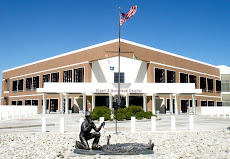Robert E. Bush Naval Hospital
While it is still officially Summer, the winter months are really not that far off. Soon we will all be winterizing our swamp coolers and getting our furnaces checked for the season. Now is the time to start thinking about carbon monoxide poisoning and taking steps to prevent it. Carbon monoxide (CO) is an odorless, colorless, deadly gas produced by burning any fuel and is the leading cause of poisoning deaths in the US. In CO poisoning, we breathe in carbon monoxide gas and it replaces the oxygen in our blood. When this happens, our organs and tissues do not get enough oxygen and we can become sick or die.
Early signs of CO poisoning consist of flu like symptoms. These symptoms may include fatigue, dizziness, headache, vomiting, trouble breathing, confusion and fainting. Carbon monoxide poisoning may lead to unconsciousness and death. Breathing CO can be especially dangerous for pregnant women, unborn babies, infants and people with anemia (low red blood cell count) or a history of heart disease. The most common sources of carbon monoxide include oil, wood or gas furnaces, kerosene space heaters, gas or oil water heaters, gas stoves, gas dryers, fireplaces and wood stoves, charcoal grills, automobiles, lawn mowers and other gas powered lawn equipment.
To help protect you and your family from CO, follow these safety tips:
Have the gas-burning appliances and venting and chimney systems in your home inspected at the beginning of each heating season by a professional technician
Follow directions for proper installation and maintenance of gas-burning appliances
Check pilot light(s) on gas-burning appliances for a clear blue flame
Make sure appliances and chimneys have proper airflow
Do not use the oven or gas range for heating your home
Do not let the fireplace or space heater run while you are sleeping
Never use charcoal grills in your home - only use them in a well-ventilated area
Never let your car run in the garage, even if the garage door is open
Do not sleep in a parked car while the engine is on
Have your car's exhaust system inspected for possible leaks
Never let anyone travel or sleep as passengers in a covered bed of a pickup truck
Carbon Monoxide Detectors
The Consumer Product Safety Commission (CPSC) recommends placing CO detectors near the ceiling of your home. In addition, the CPSC recommends placing a detector on each floor of your home, in sleeping areas, and near any major gas-burning appliance. Detectors should not be placed within five feet of any gas burning appliances or near cooking or bathing areas. Always follow the manufacturer's directions for proper placement within a given area. Remember that CO detectors are for added safety, not as a replacement for proper use and maintenance of your appliances.
Know What to Do in A Poison Emergency
Keep the telephone number of the California Poison Center on or near your telephones
If you think a carbon monoxide poisoning has occurred, move the victim to fresh air right away and call 911!
Avoid the possible CO source until a professional service technician investigates the problem


This is such a serious threat and I really do think people just don't realize it! It is nice to see such an informative blog on this topic. We really do need to try to raise awareness of this potentially fatal risk. The steps to protect ourselves from this are actually pretty simple too! A simple CO detector can save lives and preserve health.
ReplyDeleteI have to admit that at first I didn't give it much thought, then I did some research. I work outdoors but at the side of a mostly busy road. Some days I have gotten dizzy and nauseous and thought I would either faint or throw up so went home early, as soon as I was off the main roads the symptoms cleared right up! I now know that even tho I am outdoors its pretty obvious the air is not oxygen rich and sometimes polluted enough to make me sick!